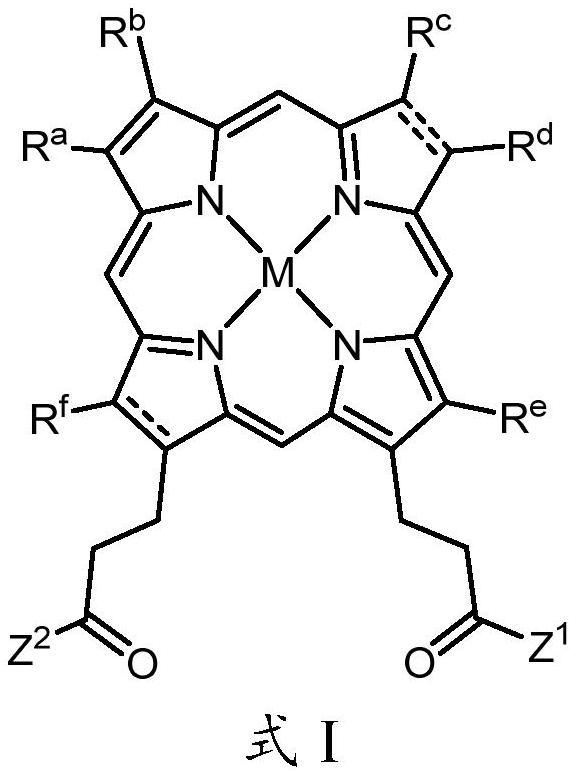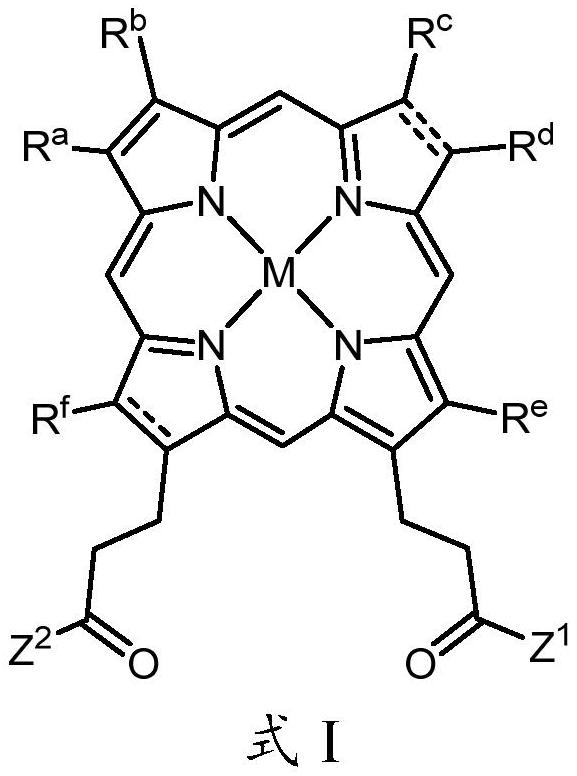The use of protoporphyrin ix derivatives to improve the health of plants
A plant, health technology, applied in the direction of chemicals for biological control, biocides, plant growth regulators, etc.
- Summary
- Abstract
- Description
- Claims
- Application Information
AI Technical Summary
Problems solved by technology
Method used
Image
Examples
Embodiment 1
[0579] In this example, PP IX and modified PP IX were evaluated for control of the Gram-negative bacterial plant pathogen Pseudomonas syringae pv. tabaci with and without chelating agents . Prepare treatment solutions at desired concentrations in phosphate-buffered saline (PBS) in 96-well plates. The bacterial suspension was inoculated into PBS and incubated at 28 °C for 30 min in the dark. After 30 minutes, the 96-well plate was placed in the light for 1 hour (at 21° C.). After irradiation, the bacterial suspension was serially diluted, and 10 μL of each dilution was evenly spread on a tryptic soy agar (TSA) plate, and placed in a 28° C. incubator in the dark for 48 hours. After 48 hours, bacterial colonies were counted and the results were log transformed (log colony forming units (CFU) / mL). Relative inactivation was determined by taking the difference between logCFU (PBS control) and logCFU (treatment). Sample illumination by emitting about 1000 μmol / m 2 / s Photosynthe...
Embodiment 2
[0583] In this example, PP IX and modified PP IX were evaluated for the control of dollar spot bacteria. Treatments were prepared at desired concentrations in phosphate-buffered saline (PBS) in 24-well plates (light and dark cultures were performed in duplicate). Then, 5 mm diameter plugs of the dollar spot isolates (a total of 3 isolates tested) were inoculated into PBS and incubated at 21° C. in the dark for 2 hours. After 2 hours, one of the 24-well plates (with triplicate isolations) was placed in the dark and one 24-well plate was placed in the light for 1 hour (both at 21° C.). After light exposure, fungal pellets were removed from PBS, blotted dry on sterile filter paper and transferred to unmodified potato dextrose agar (PDA). Radial growth of the fungus was monitored daily until the growth of dollar spot reached the edge of the petri dish. Illumination is provided by LED lamps emitting approximately 1000 μmol / m2 / s photosynthetically active radiation (PAR). The resu...
Embodiment 3
[0600] Control of the fungal phytopathogen Colletotrichum orbiculare ATC20767 (Cgm) on host plants Nicotiana benthamiana after treatment with modified PP IX compounds was evaluated. The treatments were applied to N. benthamiana plants about 2 hours before inoculation with the spore suspension of Cgm. Plants were then exposed to light for 24 hours, followed by incubation in the dark until disease symptoms appeared on water-treated control plants. Once disease symptoms are apparent, count lesions and measure leaf area to determine number of lesions / cm 2 leaf area. Four replicate plants were used per treatment and plants were randomized under light. Illumination by emitting about 180μmol / m 2 / s Photosynthetically Active Radiation (PAR) LED lights provide. The results are shown below.
[0601] Table 3: Effect of modified PP IX on anthracnose bacteria
[0602]
[0603]
PUM
 Login to View More
Login to View More Abstract
Description
Claims
Application Information
 Login to View More
Login to View More - R&D
- Intellectual Property
- Life Sciences
- Materials
- Tech Scout
- Unparalleled Data Quality
- Higher Quality Content
- 60% Fewer Hallucinations
Browse by: Latest US Patents, China's latest patents, Technical Efficacy Thesaurus, Application Domain, Technology Topic, Popular Technical Reports.
© 2025 PatSnap. All rights reserved.Legal|Privacy policy|Modern Slavery Act Transparency Statement|Sitemap|About US| Contact US: help@patsnap.com



